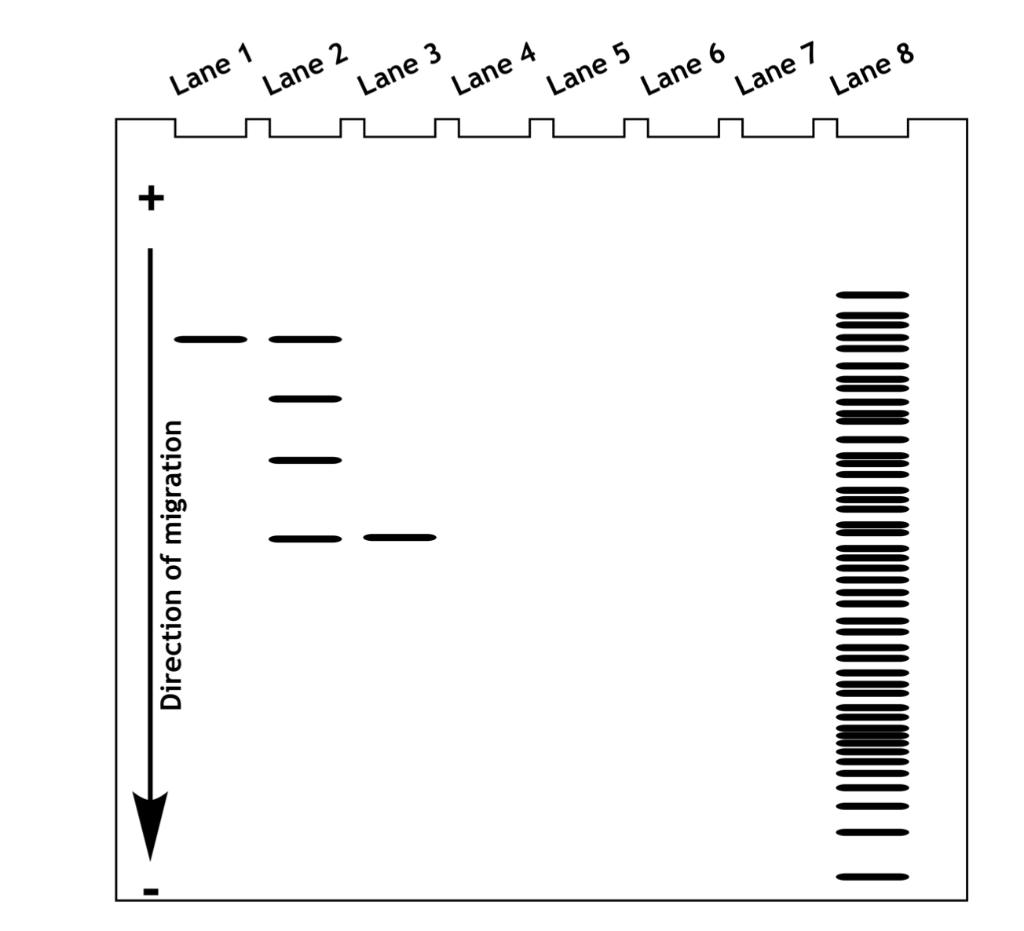Question
a). The banding pattern reveals that the enzyme of interest was either monomeric/dimeric/trimeric/tetrameric. This means that one / two / three / four polypeptides make
a). The banding pattern reveals that the enzyme of interest was either monomeric/dimeric/trimeric/tetrameric. This means that one / two / three / four polypeptides make up a functional enzyme.
b). There are two alleles encoding for this fictitious enzyme; the dominant allele is named H for “heavy” and the recessive is L for “light”. The resulting enzyme encoded by the H-allele has a few additional amino acids in its polypeptide sequence that makes it slightly heavier than the enzyme encoded by the L-allele. The overall net charge of each allozyme remains the same. Why did the allozyme in Lane 3 migrate further than the allozyme in Lane 1?
c). There are four distinct brands in Lane 2. Why?
d). Based on the results in Lane 2, list all the possible “heavy” and “light” polypeptide subunit combinations that give rise to a functional enzyme.
e). The genotypes from the fly samples in Lanes 1-3 can be determined from the gel. The genotype for the homozygous “light” fly is _______ corresponding to Lane ___, the homozygous “heavy” fly is _______ corresponding to Lane ___, and the heterozygous fly is _______ corresponding to Lane ___.
(Questions regard lanes 1-3)n

Lane 1 Lane 2 Lane 3 Lane 4 Lane 5 Lane 6 Lane 7 Lane 8 Direction of migration
Step by Step Solution
3.33 Rating (168 Votes )
There are 3 Steps involved in it
Step: 1
In the gel one band shows a single polypeptide and so four bands could be related to the tetrameric ...
Get Instant Access to Expert-Tailored Solutions
See step-by-step solutions with expert insights and AI powered tools for academic success
Step: 2

Step: 3

Ace Your Homework with AI
Get the answers you need in no time with our AI-driven, step-by-step assistance
Get Started


